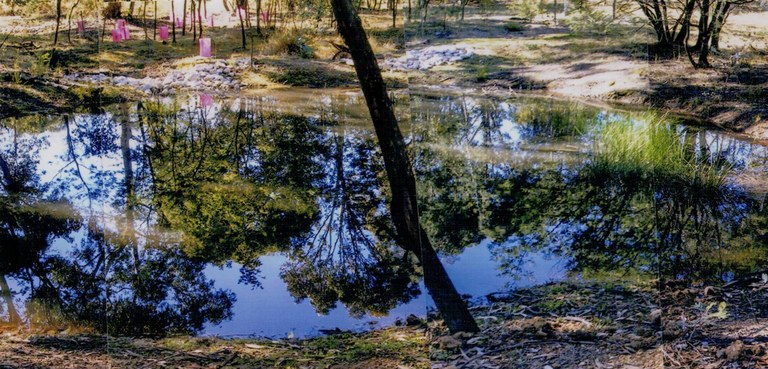
Well-structured vegetation helping farms
Published 24 June 2016. Landholders in our district have been undertaking work to create well structured vegetation communities along waterways on their farms to improve landscape function and farm productivity...
Landholders in our district have been undertaking work to create well structured vegetation communities along waterways on their farms to improve landscape function and farm productivity.
Five landholders have participated in a project run by Watershed Landcare to improve waterway health on their farms.
The Connecting Our Waterways project aimed to improve landscape function and productivity by restoring or increasing the connectivity of riparian vegetation on farms and was made possible through generous funding from Landcare Australia and the Jaramas Foundation.
The project provided support through capacity building and funding to landholders to conduct on-ground works which enhance riparian vegetation or increase the connectivity of riparian corridors on the land they manage.
“We see re-vegetation being a vital part of this project as the area around this waterway has been over-cleared under previous ownership.” said Beth Greenfield, one of the project participants.
“The riparian area runs out of remnant scrub on our neighbour’s property. So the project area provides a wildlife corridor into our property linking it to more robust riparian communities.” she continued.
As well as improving riparian vegetation and corridor connectivity the works undertaken also benefited ecosystem function.
Well managed riparian vegetation zones around watercourses can also have flow on benefits for the the management of water and soil assets, which in turn translate to increased farm productivity.
The landholders involved in the project saw the revegetation of watercourses on their properties as an opportunity to also reduce erosion risk and sediment loads and improve bank stabilisation, water quality, soil moisture retention and ecosystem health.
“As new owners of this property, we saw this project as a first step in a long term plan to improve riparian ecosystems and retain soil moisture on our property.” said Ms Greenfield.
Landholders were eligible to apply for assistance for fencing materials or labour to improve stock grazing management in riparian areas; troughs, solar pumps, etc. to provide alternate stock water; tube stock, tree guards, etc.; labour for planting; erosion mitigation structures; and weed management such as willow removal.
Most of the projects focused on erecting fencing to exclude, or better manage, livestock grazing in riparian corridors. Works were also undertaken to control erosion and stabilise stream channels in order to facilitate natural recruitment of vegetation.
While the work undertaken will encourage natural regeneration of riparian vegetation, the participating landholders also conducted planting of locally suitable species to speed up the process.
Once the weather warms up, Watershed Landcare will be conducting Farm Walks in spring to visit the project sites and provide an opportunity to view the work undertaken and see the benefits of actively managing riparian zones first hand.
This project was supported by Watershed Landcare through funding from Landcare Australia and the Jaramas Foundation.




